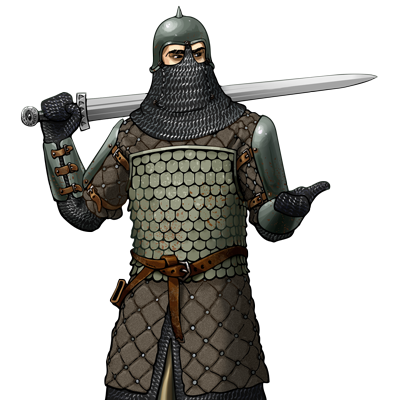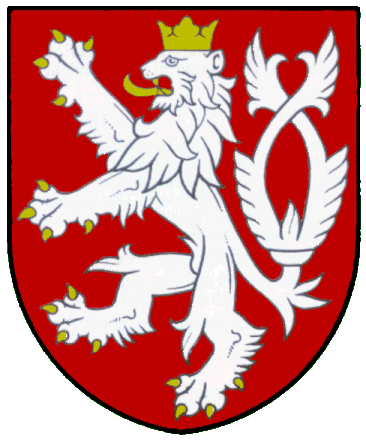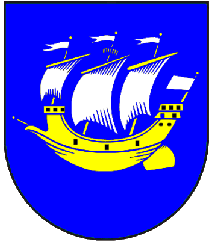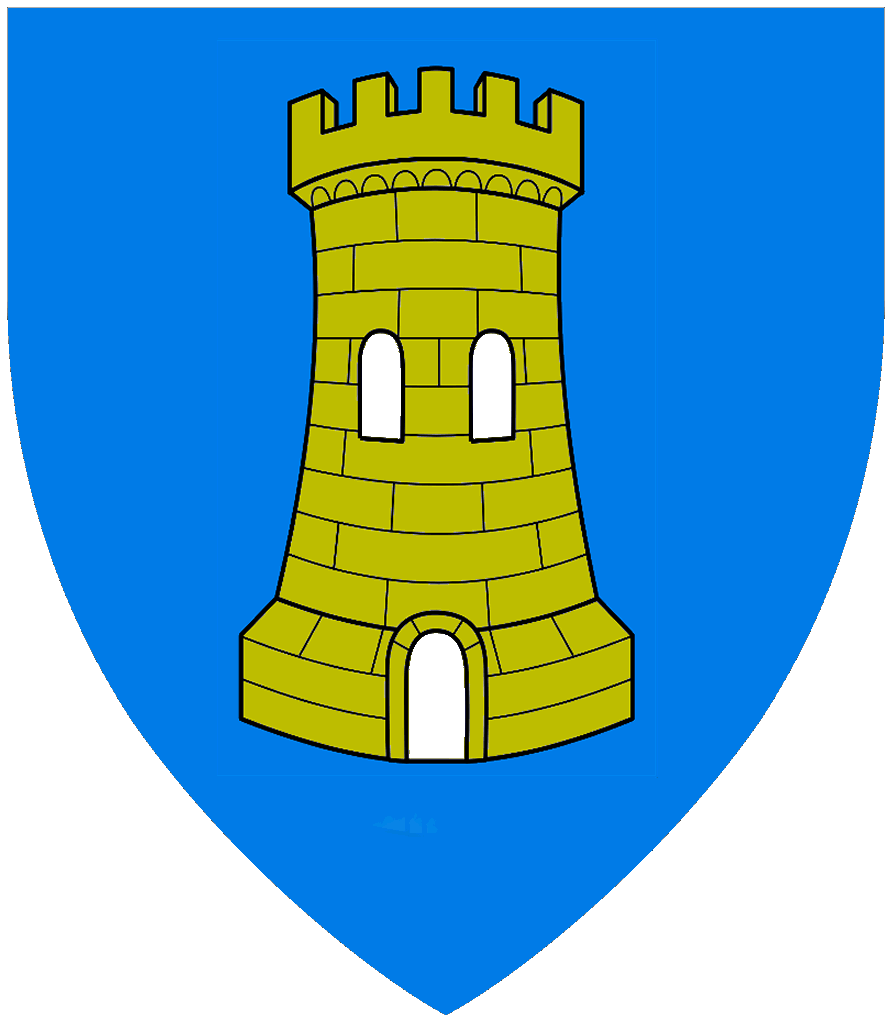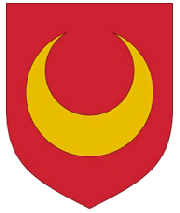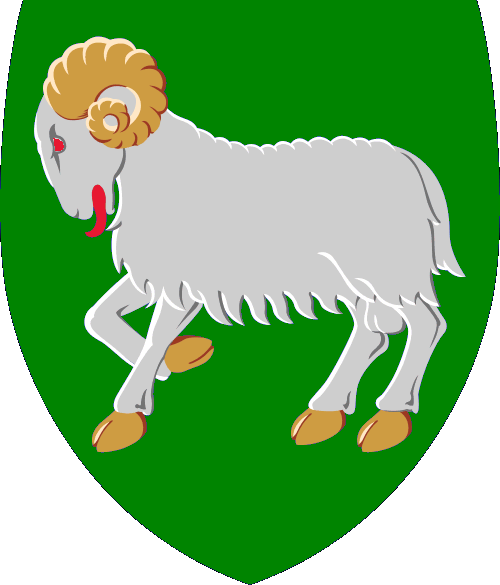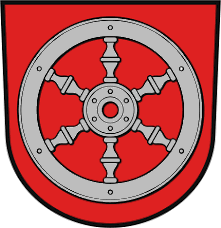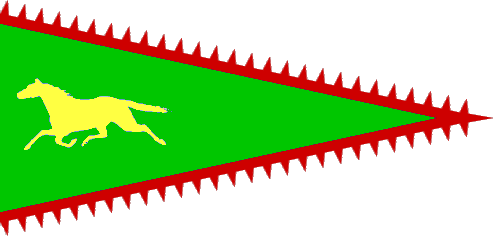Crimson Coast and Hugond Plains
Crimson Coast
The Crimson Coast is the most north-west part of Kylma the colder southern continent that stretches off south beyond the impenetrable frozen Orcbane Mountains. In the time before the coming of the Elder races the north of Kylma was ruled by a dark empire that rose and passed away swiftly leaving what are now scattered ruins. Little is really known of the builders or why they have virtually vanished from history but their old tombs and broken towers are not places for the faint hearted.
When the Elder Races came to Warlderia they left the north of Kylma alone with the humans there left in savagery or peace depending on your viewpoint. Over time some trade ports were established by humans but otherwise little contact occurred.
The dominant human group in the north of Kylma is the Hugond, a group of druidic-shamanic semi-nomadic horse peoples. The Hugond have fewer permanent settlements and predominantly travel with their herds across the lands. They are skilled riders and, unsurprisingly, have barbarians, rangers and druids as their heroes. They worship the spirits of nature and call on her power to lessen the cold of winter and to bring warm winds and weather. The few towns the Hugond have are centres of worship, metal working and agriculture where the various tribal chiefs will gather to keep the peace and settle grievances.
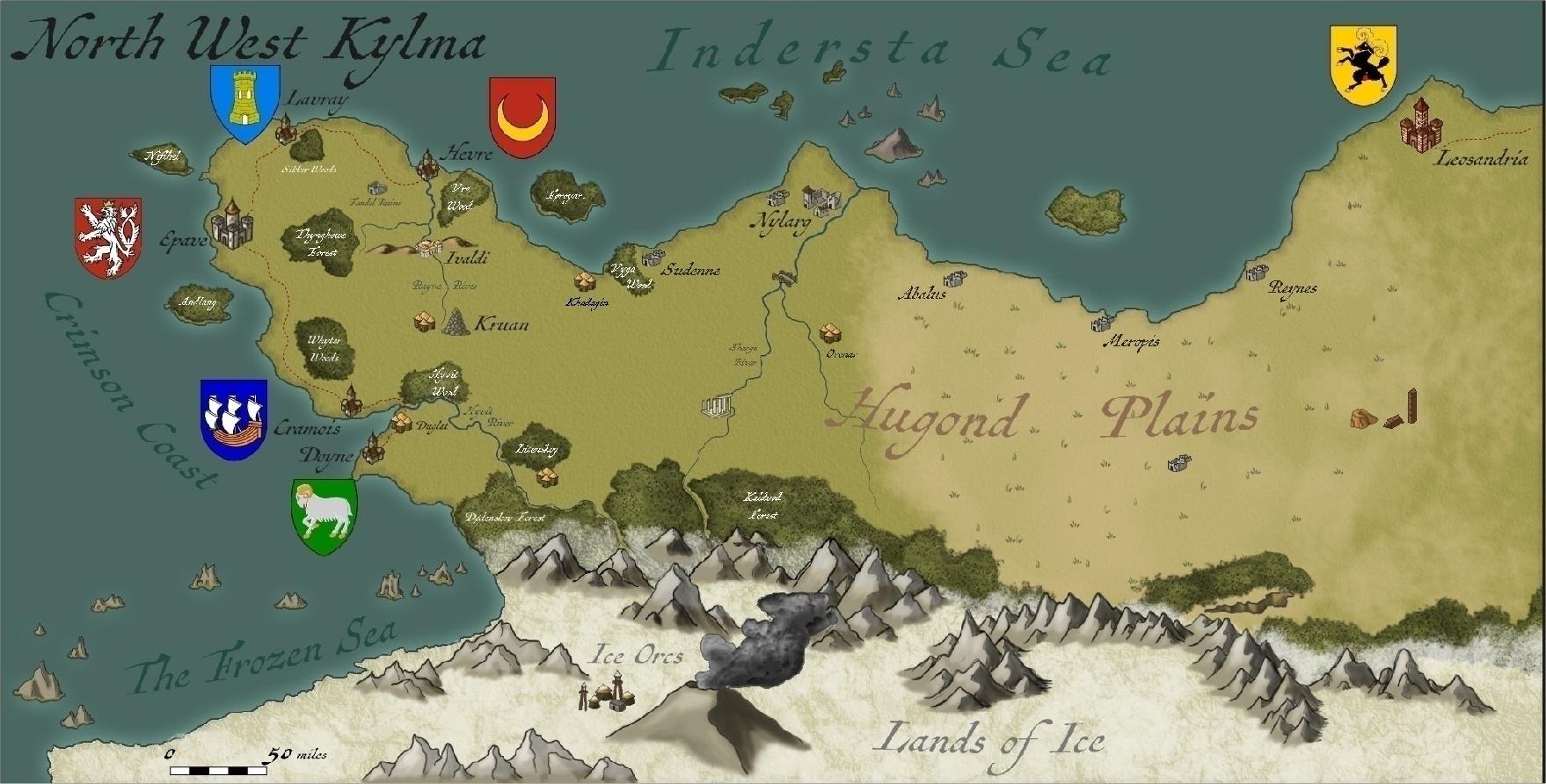
The Development of Crimson Coast
Map by SalesWorlds
From the time of the Higher Wars the men of the Blood Isles would often come to trade with the Hugond of the western shore till they established permanent trading towns that would continue to grow. At first this trade was good and all flourished but with time the Blood Islers took more and more land from the Western Hugond and the predominantly male Islers also took Hugond women as wives and concubines. These Halvras (half-breeds) tended to side with their Blood Isler fathers as the Hugond peoples would tend to shun them.
The First Blood War went well for the Hugond as the Islers were driven back in to their fortified town, besieged and forced to be supplied by sea. For the next year the Hugond thought they had all but won, unfortunately they were very wrong. Lord Raoul of Krester raised his standard on the Blood Isles and promised booty, land and women for those who would follow him back to the besieged coast. A solid invasion of heavily armed and armoured Blood Islers caught the Hugond by surprise and smashed them on their shield walls. Though more mobile the Hugond, at that time, lacked the aggression and warlike nature of the Blood Islers and were driven inland ceding the western coast to the invaders. An accommodation of sorts developed over the following years with the Islers holding the western coast area and the Hugond the inland plains. The Islers took to the horse while the Hugond copied their heavier armour and took to the bow. Culturally the Halvras merged with the Blood Isler descendants helping to forge a more distinct Crimson Coast identity.
Two centuries ago the increased decadency and despotism of the Empire brought a wave of settlers to Northern Kylma with towns and villages sprouting all along the north coast. These came from of wide range of peoples with differing cultural and religious identities who wanted to live as they wished. They were a very mixed bunch who sought a land to settle, tame and make their own but the land already had residents who were determined to resist another wave of ‘invaders’. The settlers bickered with the more established Blood Isler folk of the western towns but fought with the Hugond. They sought to build a new province in the wilderness bringing ‘civilisation’ for the savages and lands for their families. They believed that they could ignore the wishes of the natives and though some tried to co-exist, most did not. The Southern Continent of Kylma was always seen as a backward or empty area to many north of the Indertsa Sea; unfortunately they carried this prejudice with them. The diverse natue of the settlers limited their ability to support and co-operate amongst themselves. Though Prince Matryk of Nylarg claimed leadership few accepted or even acknowledged it. Though the settlers were well armed and numerous, the local Hugond were much more united. They had been beaten by the blood Islers and realised that only by working and fighting as one could they hope to be victorious. Prince Matryk led a Settler army inland to expand his lands beyond the coast and had a fine degree of initial success. The Hugond fell back and would not stand before him as they drove further inland. Soon the Settler Army was deep in the steppe and had overextended its line of supply. They started to retrace their steps back to the sea but found themselves harassed the whole way. The easy nature of the inland march contrasted horrifically with the stagger back to the coast. Starved of supplies and under constant attack the Settlers barely made it back to Nylarg but had lost over half of their number. The settlers had come to civilize a wild land but the ‘ungrateful’ Hugond failed to appreciate this and it lead to the Second Blood War. The Hugond had learnt from their Blood Ilser neighbours and attacked with a savagery along the north coast and merely blocked off the Crimson Coast to the west. All the settlements from the Coast to Leosandria in the east were raised and the settlers either slain or forced to flee. A valiant stand at Nylarg ended in the annihilation of the Settler army and their dream of a new province.
Fearing for their own safety and with their lands overflowing with refugees, the men of the Crimson Coast marched against the Hugond who were dispersed hunting the invaders. Showing that they had taken to the horse well the Crimson cavalry matched the Hugonds and drove them back before the bulk of the plains folk could gather. The holy site of Kruan was desecrated and its keepers sacrificed to the Blood Isler gods while the demoralised Hugond retreated far to the east as winter set in. Without the shamanic- druidic rituals of the Hugond the winter was very severe in the west and the Crimson Coast froze with the worst and longest cold weather period in living memory. The following spring and summer were equally bad and only after a peace was made did the Hugond return to Kruan and re-sanctify the site banishing the foul weather.
Since then the peace has held as the Hugond are not strong enough to defeat the Crimson Coast and the Coasters are in turn unwilling to bring endless snow and ice upon themselves. More settlers from across Warlderia have come giving the Coast a mixed and cosmopolitan feel under its old Blood Isler rulers who limit further expansion on to the Hugond plains. The settlements have continued to grow with the two great cities of Epave and Cramois are now dominant.
Today:
The sprawling City of Epave is ruled by Duke Rankin, the titular overlord of the Crimson Coast. It is a prosperous trading port were the merchants of both Empires and the Successor States peacefully deal with fierce Blood Islers, Crimson Coasters and even Hugonds.
Cramois is ruled by its confident ruler Earl Gylaw who is the ambitious son-in-law of Duke Rankin. The City of Cramois is also a trading port but also has the largest shipyards in the Coast using the fine timber of the Whyter Woods to the south.
The upstart is the Town of Herve in the north east of the Coast with dreams of becoming a third great city. Ruled by Vidame Hanlyn it well located for trade and always open for business.
Timeline of Events:
Trade begins between Blood Isles and the Hugond in North West coastal area of Kylma (approx. period of the Higher Wars)
Blood Islers start settling and expanding leading to conflict.
1st Blood War
Settlers arrive from Northern Continent and settle the coast to the east of the crmison Coast area (approx. 200 years ago)
2nd Blood War (190 years ago)
Ivaldi Founded (53 years ago)
Languages:
Most of the folk of the Crimson Coast speak Common as their primary tongue but a minority, of those descended from Blood Islers, speak Sōren (Soo-ren) the first language of the men of the Blood Isles. This is also more common amongst the followers of Kord or Vatun and more traditionalists.
Full Map of the Lands of Warlderia (V:3.6)

|
Prime Warlderia 3.6.PNG Size : 2902.136 Kb Type : PNG |
